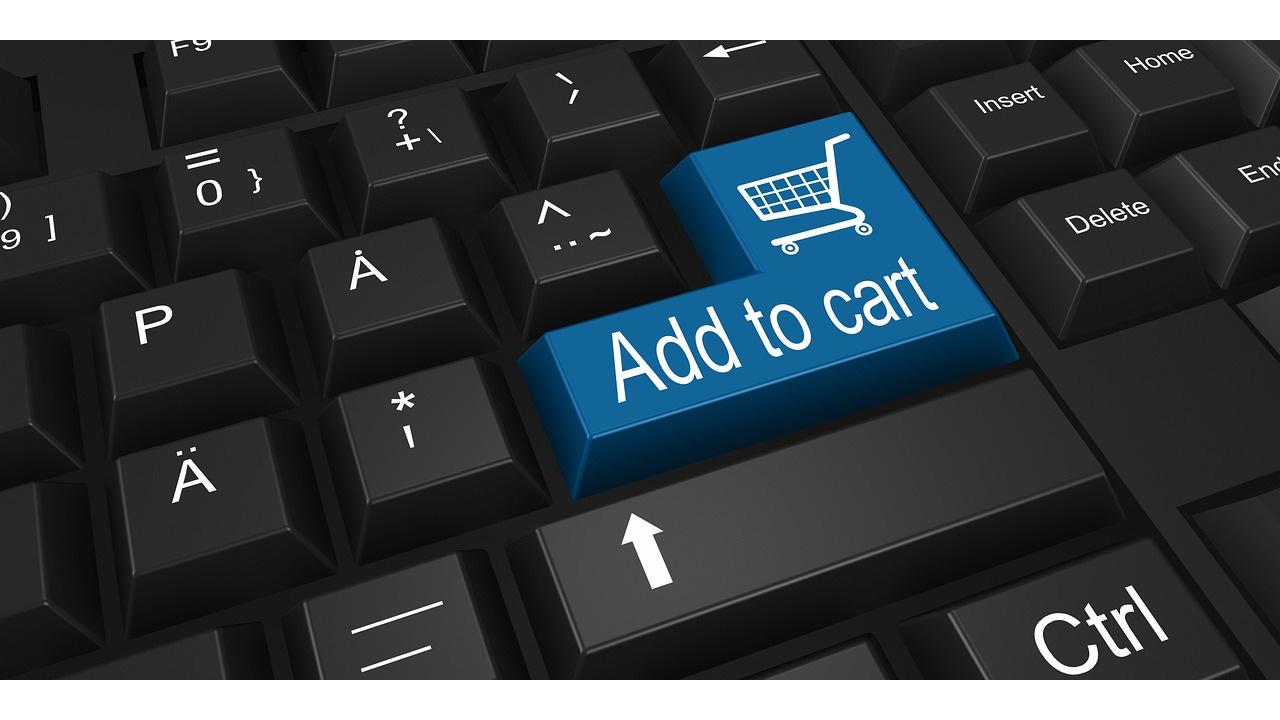Are you dreaming of starting your own eCommerce business but don't know where to start? Well, fear not! In this blog post, we're going to outline the whole process of starting an eCommerce business in India, from beginning to end.

From coming up with a business plan to launching your website, we'll make sure that everything is step-by-step and easy to follow. So if eCommerce is something that interests you, read on and get started!
Step 1: Know Your Business Plan and Model
Starting an e-commerce business in India can be a great opportunity for entrepreneurs of all levels of experience and skill. However, it is important to be aware of the various factors that can affect business success. That's why it's crucial to develop a strong business strategy and model from the get-go. Make sure you research the different e-commerce platforms available before making a decision. Once you've chosen the right platform, it's time to develop a clear business plan and model. This will help you make informed decisions, stay on track, and reach your business goals.
Currently, there are two options available to kick-start an eCommerce business, the first being a proprietary eCommerce website, and the second being an established marketplace.
Let us understand the difference between the two:
A. The Proprietary eCommerce website:
- This is one of the hardest ways of starting an eCommerce business. To start this one would need a strong web development team, backed by an online marketing team, and a payment gateway to collect payments with ease.
- Those interested to start an eCommerce business should understand that this would take a great amount of investment, all for the long-term initiative.
B. Established Marketplace:
- Join an established marketplace if looking to kick-start your eCommerce business, or if the plan to sell products or services online.
- This is one of the easiest ways as it requires the sellers to have a bank account and a GST registration. The best part? Everything you would ever need is taken care of, like marketing, technology development, payment gateway, logistics, and more. Some of the top eCommerce marketplaces to look for are Amazon, Flipkart, Snapdeal, and more.

Step 2: Conduct Market Research
Starting and running an e-commerce business in India can be a daunting task. But with the right planning and strategies, it can be a rewarding experience. Before starting your business, it's essential to do some market research. This will help you understand the Indian consumer and their shopping habits. Make sure you have a good understanding of the e-commerce market in India before you start selling so that you're able to succeed in this competitive industry.
Step 3: Brand Your Brand
It's important to brand your business and make it stand out from the competition. This can be done by choosing a name that reflects your business and its values, as well as developing a strong website that provides information about your products. You'll also need to develop marketing campaigns that target the right audience and promote your products in the right way. With the right strategies in place, eCommerce business in India can be a successful venture.
Step 4: Find The Perfect Logo
As soon as you settle on a name, develop a logo that represents your brand and conveys the essence of your business. There are many free and affordable logo software programs available online, so be sure to explore them all. After finding the choice of your design, print out several copies and take them to local businesses for feedback. This will help you get feedback on the design, and make sure it's suitable for your business. Remember to save your original design so you can use it again if needed!
Step 5: eCommerce Business Registration
The next step is to register your business with the government. This will involve filling out several forms, and depending on the business you're setting up, may require a license or other permissions.
Some of the essential ones out there are sole proprietorship, limited liability partnership, single-person company, or a private limited company. Each of these types of businesses has its advantages and disadvantages, but seeking legal advice would be the best choice.
Step 6: A Software For Your Business
This will help you manage your business more efficiently and handle customer inquiries in a better way. There are various software options available, so it's important to shop around and find the best one for your business needs. The right platform will allow you to track sales, keep records of shipping transactions, etc., making e-commerce management much easier.
Step 7: Create An eCommerce Website
It's essential to start on the right foot by creating a website that accurately reflects your brand and product. Make sure all pages load quickly and look professional, no matter the device used. In addition to installing the latest updates, make sure to add images, videos, and other features to enhance the customer experience. You can also choose the design interface that best suits your business and blog style. Once you have everything in place, it's time to start marketing your business online.
Step 8: Open A Bank Account
There are many banks, that offer e-commerce accounts, so it's important to choose the right one for your business. Additionally, make sure to follow all the necessary regulations and taxes that apply to e-commerce businesses in India.
This will help protect you from potential legal issues down the road. Once your bank account is open, wire in some initial funds so you can get started. Keep in mind that e-commerce businesses in India face unique challenges, so it's important to have a business plan that takes these into account.
Note: To get a bank account for your eCommerce business, an Employer Identification Number (EIN) is mandatory. Without this, you cannot operate an eCommerce business.
Step 9: Payment Gateways
There are a variety of payment gateways available, and it's important to choose the one that will best suit your business needs. Post choosing a payment gateway, it's time to set up your merchant account and shipping details. Once everything is set up, it's time to start selling your products and watch the money roll in! Consider using an e-commerce platform like Shopify or Amazon, as they offer built-in payment processing features that make online selling easier. Also, getting a couponing platform like GrabOn is a sure deal, that will drive your business to the next level. Not only does it add value to your business, but helps retain customers, eventually bringing in more sales.
Step 10: Prepare For The Launch
Preparing for launch is all about getting your products ready for launch. This includes designing a product page, pricing scheme, and shipping information. Make sure to plan out your promotional efforts for the launch day! Lastly, create a pricing strategy and begin to build your buyer persona research. By doing this, you will be able to target the right market and maximize your profits.
Step 11: Build A Strong Customer Base
It's important to build a strong customer base. There are a variety of ways to do this, but the most effective approach is to target your target market directly. After building a relationship of trust with your customers, it's time to offer them excellent service and competitive prices. Be creative when promoting your store - people will want to shop from the best! Remember, e-commerce is all about giving customers the best possible experience, so make sure you put your all into it!
Frequently Asked Questions
How do I find the right eCommerce platform for my business?
When it comes to eCommerce, it is important to evaluate which platform best suits your business needs. There are several popular e-commerce platforms in India, including Shopify, Magento, and BigCommerce. Once you have selected a platform, the next step is to create a custom shopfront using themes or templates available online. There are numerous e-commerce platforms that you can choose from, depending on what features and services you need.
What’s the cost of starting an eCommerce store in India?
As to experts, it would cost a minimum of Rs 1 lakh to register for a Private Label Company, and the total cost would depend on the business model or category.
How can I increase my chances of success by optimizing my website for search engines?
There are countless ways to improve the visibility of your site on search engine result pages (SERPs), there are a variety of things you can do. Some of the most common measures that you can take include:
a. Add keywords to your website's name, description, and meta keywords.
b. Make use of meta descriptions to give people a better idea of what your website is all about.
c. Create an easily accessible user experience by designing your website using intuitive design principles.
d. Keep up a good social media presence to let people know about any updates or new content that’s been added to your website.
e. By optimizing your website for search engines, you'll improve the chances of getting visitors from Google and other major browsers.
What are the most important things to consider when starting an e-commerce business in India?
When starting an e-commerce business in India, it is important to have a clear idea of what you want your business to do and what it will look like. Once you have this information, you can begin the process of finding the right technology platform, designing a website that meets the shopping needs of your target audience, and developing a marketing plan that will help your store reach its potential. Additionally, avoid overspending on start-up costs and make sure you have a solid business model in place before launching your store. By doing these things, you will be able to minimize any risks and attain a successful online business in India.
Conclusion
After reading the blog, we are sure you have a better idea of how to launch a successful business. However, there is one thing that needs constant monitoring and focus – customer support. Apart from this, if you also know how to market well and build trust with your target audience, you will be on track for success!
Hope you loved reading the blog post.
 Subscribe today by clicking the link and stay updated with the latest news!" Click here!
Subscribe today by clicking the link and stay updated with the latest news!" Click here!










